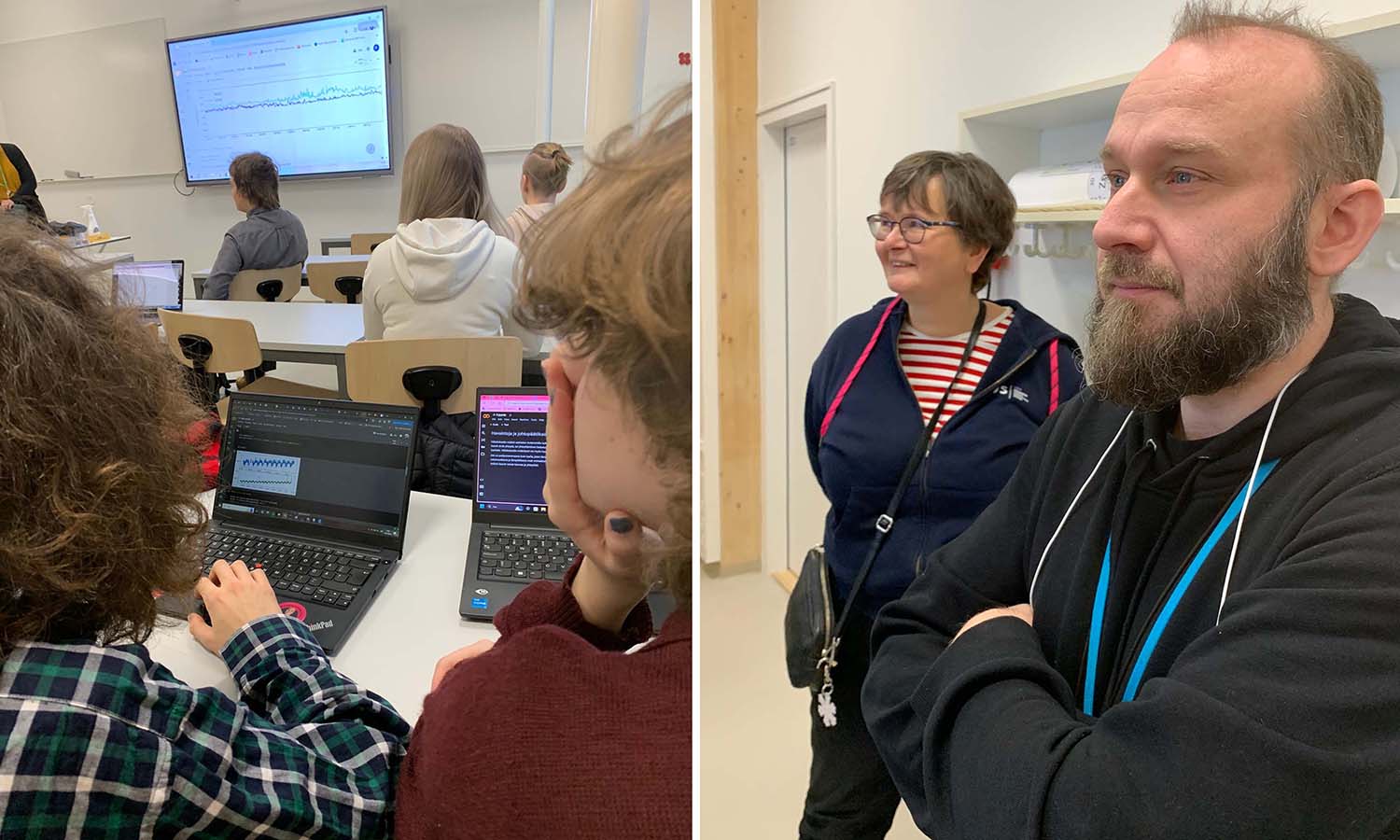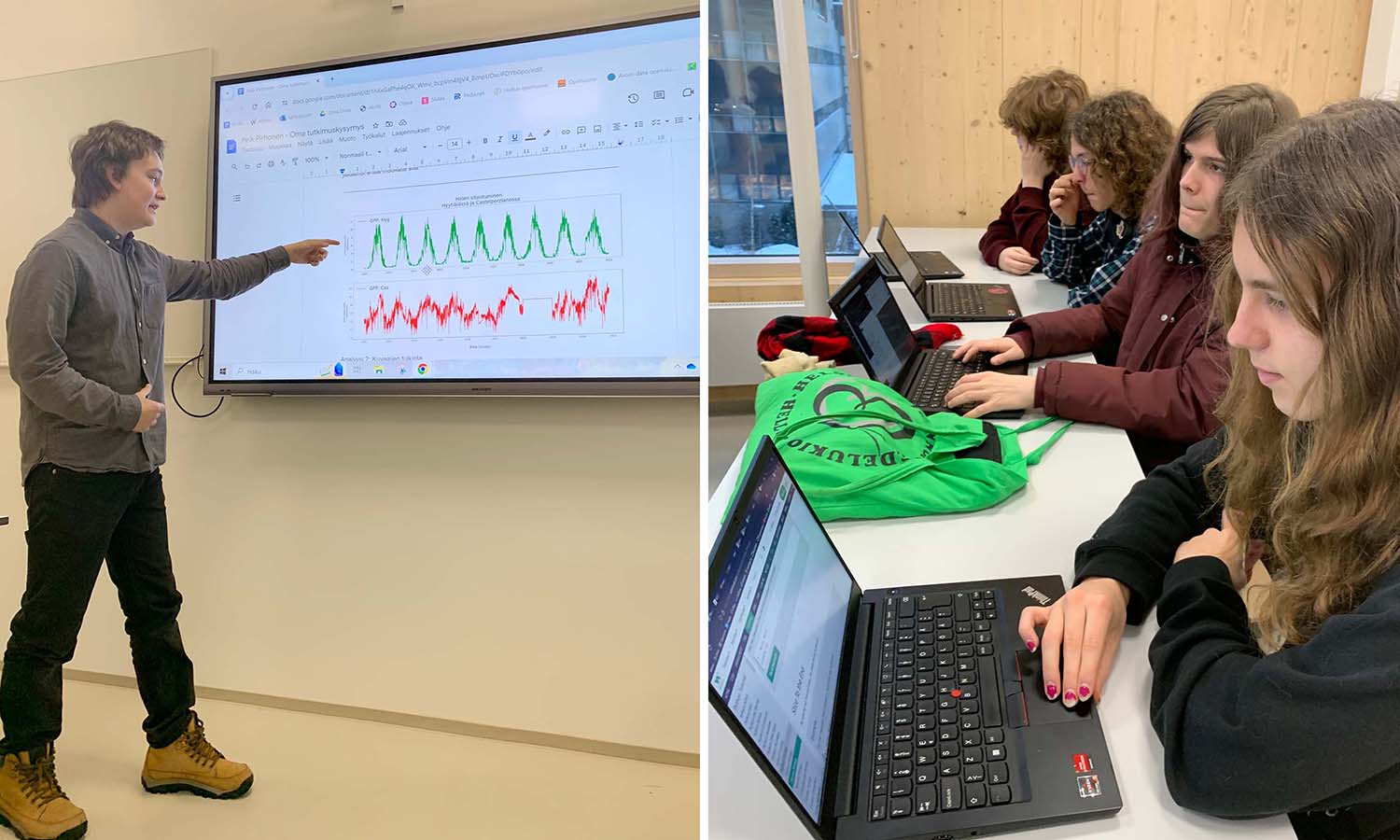
An ICOS Cities project team recently embarked at a Helsinki high school to support young students in learning about climate change through coding. Helsinki is part of the ICOS Cities city network, where tools and services developed within the project are tested.
The ambience in the classroom is tense but filled with excitement and positive anticipation.
“Why is the methane concentration lower in summer?” asks Ville Kasurinen, ICOS Data Analyst. 17 students with faces like questions marks follow him intensely until he gives an explanation.
The students at the Upper Secondary School of Natural Sciences have been digging deep into data from various ICOS stations around Europe. Each group of students got the chance to choose their own research question. Some wanted to compare CO2 concentrations between stations, while others studied both CO2 and CH4 concentrations at the same station. Some were more interested investigating whether there is a connection between temperature and greenhouse gas concentrations and what could explain this. To find answers, the students have been using coding. Now the day has come to present the results.

“First, they chose which quantities to look at. Temperature, amount of carbon dioxide and methane in the air, carbon sequestration and release of vegetation, rain and winds and so on. Then they used coding to check how the selected variables behave over time, what are the variations and how does the location of the measurement site affect the results,” says Peitsa Veteli, PhD researcher at the University of Helsinki, who has been leading the group of students through the process.
Fearlessly immersed in coding
As part of the coding course, the ICOS Cities team, represented by ICOS Head of Operations Elena Saltikoff and Ville Kasurinen, got to offer the students a quick and intense course in greenhouse gas monitoring.
“We wanted to pilot this kind of use of our data, to encourage teachers in different parts of Europe. It was nice to see how the students fearlessly immersed in coding, of which most of them had very little earlier experience and soon started to ask for more data. And they were very openly thinking about potential conclusions from the results they achieved," says Elena Saltikoff.

Ville Kasurinen enjoyed seeing the enthusiasm in the students:
“They were eager and had put in an effort to compare the stations between each other. There was a really nice, energising and inspiring atmosphere among the students.”
Peik Pirhonen, one of the students, was at first hesitant to take on the task:
“I had never coded before and I was afraid of it. In the end, it was really nice but I was running out of time. I wrote a research method, using 200 lines of code. The most challenging thing was to make the code work, written correctly to the millimeter, checking there are no errors. It was great when I managed to solve the problems, and the coding turned out surprisingly smooth and logical. It was nice to be able to explain why there are differences in temperature and see how they are linked to each other.”

The students also got to try playing a climate fresk game, learning ways to tackle climate change through various actions. The game was lead by Liisa Ikonen, ICOS Cities Project Manager:
“They had a lot of thoughts on how to slow down climate change, such as reducing buying fast fashion, voting in elections and prioritising sustainable travel. They also suggested to reduce food waste, recycling and minimising consumption.”